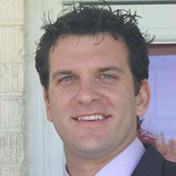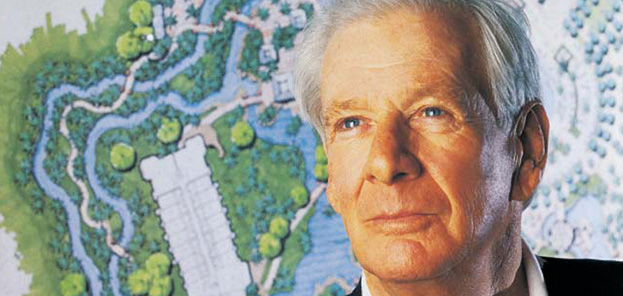The experience of traveling to a foreign place can be a spiritual, cultural, physical and sensorial journey. It is rarely enough to have a pocket translation dictionary and appropriate currency. Sounds, smells, architecture, geography, dress, customs, language and a host of other external elements contribute to a heightened awareness of the unfamiliar; a place distinctly different from one’s native home. For most, such new experiences are the lure of foreign travel.
For designers who are involved in creating destinations and/or enhancing sense of place, linkage to the local culture and an understanding of user tendencies and patterns is a critical basis for design. Hence, the term “Culturability”, which refers to the critical relationship between culture and usability in design.
Successful and well used destinations are respectful of cultural heritage and traditions, as well as being climatically appropriate and environmentally smart. Land planners and landscape architects routinely employ methodologies to understand and address the interdependencies of people, place and community within a locality. Such place-based design approaches focus on cultural diversity, environmental stewardship and optimization of regional resources. Also important, understanding the formal and informal networks people use for communicating as well as artistic expression, which often reveals how people interpret the meaning of their lives. Additionally there is an equally significant environmental aspect of culture in which traditional uses of natural resources or materials symbolize local ties to processes. These cultural patterns, mindsets and priorities generally reveal the design vernacular of a culture.
An inclusive approach to design provides opportunities for incorporating insights into the role and place of culture. People are likely to take part in and remain committed to development efforts in which they have a direct connection. This is particularly important in heritage tourism that seeks to elicit local participation, philanthropy, volunteerism, and community action. This process must also recognize that communities are dynamic and constantly evolving as people move in, move out and face various life challenges. The end goal is to create an environment that is invigorated by the incorporation of social connectivity, regional authenticity, local character and community well-being. Please reach out to us for more information at info@edsaplan.com
meet the faces of edsa



John Torti is part of a long family history of architects and builders, with construction having always been a fundamental part of his life. His attraction to the profession stems from a desire to design spaces that are not only functional but beautiful and harmonious with nature. His admiration for the outdoors is creatively captured through his photography, sketches and the design vernacular he develops. By paying careful attention to details, John has developed an extensive understanding of scale and place. His quality designs have had a positive impact on society, cultural preservation and the environment. John’s travels and worldwide exposure continue to heavily influence his career development and creative purpose. A graduate from West Virginia University with a Bachelor of Landscape Architecture, John joined EDSA in 2011 and currently a member of the Gray Studio.
As an artist and letterpress printer, Kelly Hitzing found inspiration in Brooklyn’s foliage and urban agriculture. Being ever present in well-designed parks, gardens and public spaces, she began using plants as a palette for creating. Captivated by how these outdoor spaces influence mood, mind and spirit, she returned to school; earning a Master of Landscape Architecture from the University of Virginia. A Florida native, Kelly is drawn to minimal, modern details and materials as the framework for lush, colorful, tropical planting. As a member of the Dugan Studio since 2013, she has gained an appreciative understanding for the complex process surrounding public work. In creating spaces for people from all different walks of life, her designs focus on activating underutilized public spaces and reshaping the pedestrian experience for residents and tourists.
With a design leadership that merges experiential vision with precise detailing, Rob Hutcheson thoroughly enjoys the organic progression of project design. From initial thoughts conveyed on paper, to synthesizing ideas with colleagues, and ultimately seeing a project built, Rob draws inspiration from the deep history of a site and its potential to serve contemporary users in new ways. During his 15 year career, he has worked on transformational projects related to resorts, attractions and tropical destinations. He is currently providing construction administration for the Four Seasons Resort at WDW, the hotel brand’s largest property. Rob believes that spaces must create a draw for people by combining quality physical elements with a unique energy and vibe. A graduate from the University of Kentucky, Rob joined EDSA in 1999 and is a member of the Linquist Studio in Orlando.

Behind every project large or small, there should be a desire to make a difference.
gray studio insight
Being a responsible, global citizen is a crucial part of EDSA’s culture and business. We take our responsibilities to the public seriously and believe it’s more important than ever to serve the needs of people in the communities in which we do business, especially in towns we call home. An example of this is Gratigny Plateau Park, an underutilized, undeveloped park located in northwest Miami-Dade County, Florida.
When a local news channel asked businesses to join their “Making A Difference” campaign to tackle this neglected site, EDSA did not hesitate to participate. The Gray Studio is donating design services focused on turning three vacant lots into a thriving park for the neighborhood. Fueled by our employees’ passion and dedication, the design includes play structures, exercise stations, a flower garden and walking trails. Together with WPLG Local 10, Miami–Dade County Parks and Recreation, other professionals, government agencies, and the residents of the area, the Gray Studio is working towards implementing the design. They are excited about how it will affect the future of this community, and hope to have it completed by the end of the summer.
For more information on the Gray Studio visit: http://www.edsaplan.com/en/Team/Studios/Gray
As we approach the five year anniversary of the passing of our founder, leader, and friend, Edward D. Stone, Jr., (August 30, 1932-July 10, 2009), we would like to celebrate and honor his memory. A true gentleman, he was a natural born leader and certainly an icon, both inside and outside the profession of planning and landscape architecture. Ed is best remembered for awakening in others a sense of leadership, a spirit of creativity and desire to be the best. He insisted that every project be put in the proper historic, social, geographic, environmental and economic context with an approach that recognized the subtle differences. Ed established legacies of design, collaboration and respect that remain the pillars of EDSA's culture and people. We miss you Ed.
Please watch our tribute video on our YouTube page: http://youtu.be/rHQc250C7Mo




